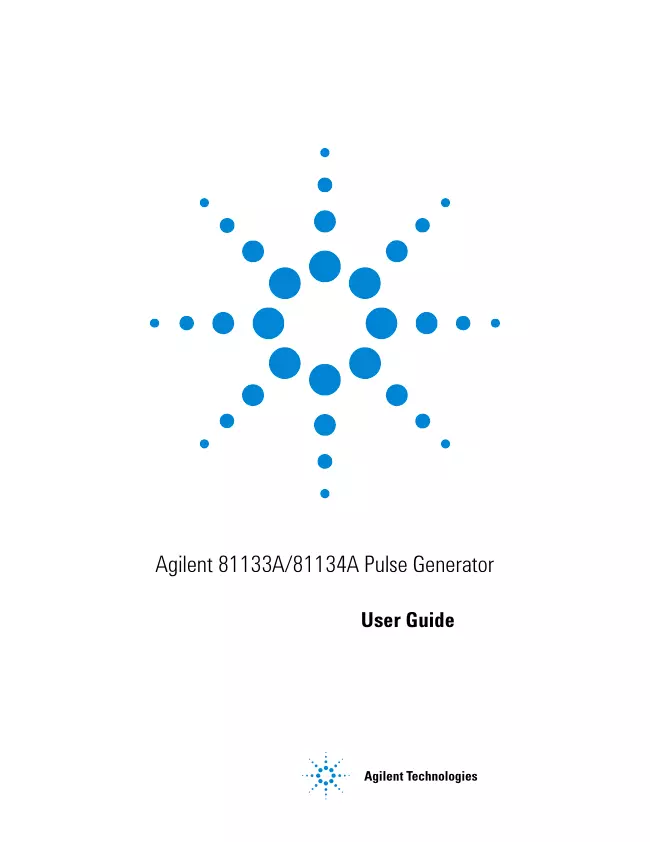Agilent - 81133A - Generator
Manufacturer:

Image 1 of 3
If you have any other photos or manuals for the
Agilent 81133A
you can
upload the files here.
Equipment:
81133A
Date:
2002
Category:
Group:
Sub Group:
Information
Introduction to the Agilent
81133A/81134A Pulse Generator
The Agilent 81133A and 81134A Pulse/Pattern Generators are high-
end, easy-to-use tools for generating pulses, patterns and data at
speeds up to 3.35 GHz. They are ideal instruments for testing logic
devices (for example, ECL, LVDS, LVPECL) and other digital devices
with clock rates from 15 MHz to 3.35 GHz.
You can use the Pulse Generators for applications where timing and
performance are critical and full control over signal jitter is required.
The instruments are ideal data and pattern sources for eye diagram
measurements.
Benefits and Key Features
Your advantages are:
• Fast rise times, low jitter and full parameter flexibility
When timing is critical, the 81133A/81134A’s fast rise times, the low
jitter and full parameter flexibility make it an ideal pulse, clock and
data source.
• PRBS from 25-1 ... 231-1
You can evaluate the performance of a device in eye diagram
measurements with PRBS from 25-1 ... 231-1.
• Full signal manipulation
You can add jitter to clock or data signals with the Delay Control
Input and deform the eye with the Variable Crossover feature.
• Predefined levels
You can use the predefined levels to easily set up channels for
commonly used logic families. These are: ECL, LVPECL, LVDS.
• Data can be 8 kB of pattern memory
You can create large data patterns with 8 kB of pattern memory.
1 Manual
User manual
Manual type:
User manual
Pages:
92
Size:
1.2 MB
Language:
english
Revision:
Manual-ID:
5988-7401EN
Date:
August 2002
Quality:
Electronic document, no scan, very well readable.
Upload date:
Jan. 8, 2019
MD5:
1a8c3f77-2a22-234e-4dee-b15e007aba35
Downloads:
507
